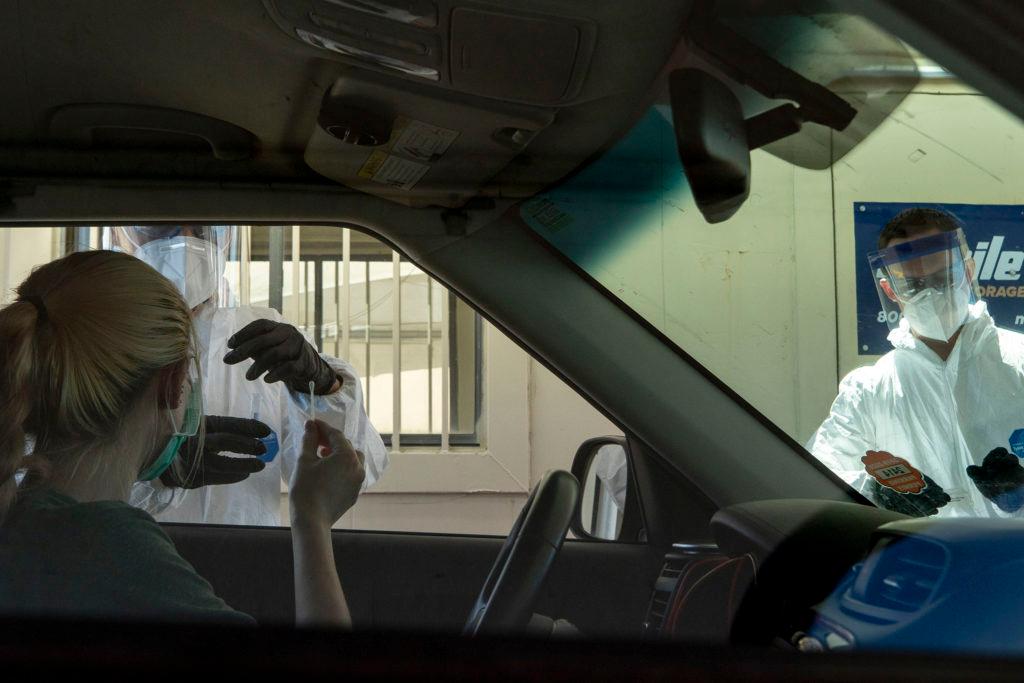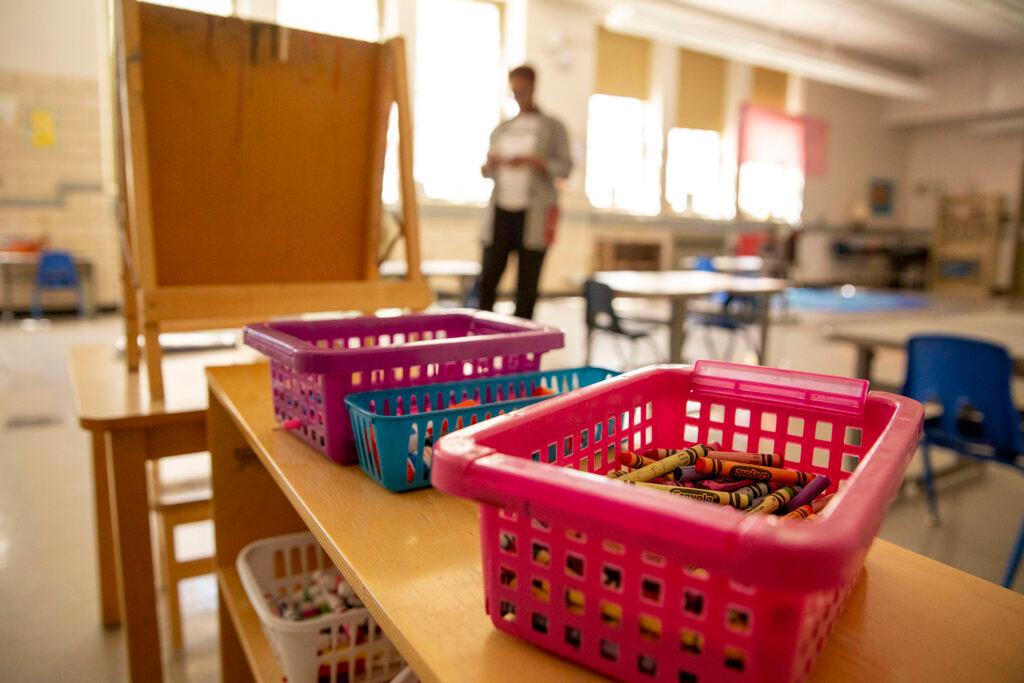
The end of June marks nearly four full months in Colorado’s battle with COVID-19. While states like Texas, Arizona, Florida and more than 10 others have seen dramatic outbreaks of the virus, Colorado has seen only a minor uptick in recent weeks.
While the number of positive cases has grown here in June, so has the amount of testing the state is doing, including finally hitting the goal of 8,500 tests on a single day last week. The number of those tests turning up positive, however, has stayed flat, never getting back above 4 percent since it was last there on June 4.
Public health experts say they continue to be optimistic.
“We're not seeing a dramatic trend in terms of growth in new cases,” said Glen Mays of the Colorado School of Public Health. “Hospitalizations are stable, deaths are still very low so we're continuing to be in a pretty stable period in terms of transmission.
The state said some of the rise in positive tests in the last couple of weeks could have something to do with changes in behavior among Coloradans. The slightly higher numbers coincide with the lifting of restrictions on Colorado businesses, said Sarah Tuneberg, who heads up testing and containment of COVID-19 for Colorado. But Tuneberg said she’s not concerned.
“It aligns with what we would expect as more and more people interact with each other,” Tuneberg said. “We expect to see more disease transmission, so more positive test results.”
Mays predicts the summer tourist season will also lead to a bump in cases.
“We're going to certainly expect some importation of cases as people are traveling in from outside, particularly from some of our border states that have much higher rates of transmission,” Mays said.
That’s not to say there aren’t areas of concern within the state — enough to persuade Gov. Jared Polis on Tuesday to roll back a two-week-old order allowing bars to re-open statewide.
Public health officials in Garfield County, for example, announced Tuesday that they will not move to further re-open the economy there because of two consecutive weeks of increased positive tests.
The numbers there remain minuscule compared to Front Range counties, but are still enough to prevent Garfield from meeting new criteria set by the state Tuesday to allow a move from “Safer at Home” to “Protect our Neighbors.” In that third stage, counties will gain greater independence from state rules if they can show that case counts remain low and they have hospital capacity to handle any unexpected surge of cases.
That’s a conservative approach, and it contrasts Colorado with states like Arizona, Texas and Florida that opened quickly and now face exploding case numbers — and, in some cases, regret.
Colorado’s relative stability since the start of June has led some to speculate about what might be unique about the state, beyond the measured approach to re-opening — such as whether the population tends to be more compliant about mask-wearing and social distancing.
Other factors, like Colorado’s younger population, likely play a role in the low numbers of hospitalizations, but something else could be at play in the still-low infection rate — the weather.
Mays said the states now having problems also moved more rapidly to opening indoor spaces like restaurants and bars. The virus is less likely to spread outside where the air is constantly moving, and Colorado is known for its outdoor recreation and temperate climate. In some of the states experiencing the biggest outbreaks right now, the climate keeps people inside in air conditioning.
“In Florida and Texas, it's not real comfortable to be outside right now,” Mays said. “These are hot and humid states so there’s more indoor activity and that’s possibly another factor.”
Social distancing data collected by Google from cellular phones backs that up. A look at park visits in Florida and Arizona shows visits to outdoor recreation areas down about 10 percent in Arizona and 11 percent in Florida as compared with January and February, indicating more people are staying indoors. Visits to recreation areas in Colorado are up 92 percent compared to the winter months.
Mobility data indicates another factor that could be limiting transmission in Colorado. Many residents, especially Denverites, haven’t been returning to their offices and are still shopping less than they did before the pandemic in January and February.
State officials like Tuneberg have touted the increase in testing in the last month, which she said, “means we are doing sufficient testing to capture our disease transmission.”
At the same time, critics say the state needs to do more. The governor said in April that he wanted the state to be conducting 8,500 daily tests by the end of May but the daily count is far less than that.
A recent release by the Harvard Global Health Institute indicates Colorado is falling short with testing. It found that the state is currently doing an average of 91 tests per 100,000 people, with an all-time high of 150 per 100,000 in a day. Harvard believes the state should be doing 225 tests a day per 100,000 people to keep the virus from spreading and 818 tests per 100,000 to suppress the virus.
Mays said testing is something the state needs to continue to work on.
“I think the state has made some very good progress in reducing some of the bottlenecks and ... trying to address some of the supply constraints in testing materials,” Mays said.
At the same time, Mays said adequate supplies are a continuing problem. He said there’s also still confusion about who should be tested. The state recommends that anyone with symptoms get tested, and that those who think they have been exposed should isolate for 14 days. That’s different from early on in the pandemic when supplies were more limited.
Tuneberg said she also hopes to ensure that all Coloradans are within a relatively short distance from a testing site, even getting to the point where places like supermarkets do testing.
“We're working to enhance the capacity of local businesses to do testing [just] as you would go to a drug store and get an influenza vaccine,” she said.
That plan may take some time to come together. Late Tuesday afternoon, the city of Denver announced that the busy testing center at the Pepsi Center would have to reduce its hours for the foreseeable future after testing supplies were shifted to states with outbreaks. Testing will now be limited to morning hours, five days a week.









